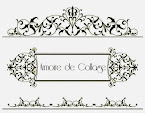Traveling was a bit more cumbersome in the good ol’ summertime. You didn’t just throw a few things in a bag. Planning for a vacation was thorough and methodically packed in a trunk. Storage trunks date back thousands of years, but they reached a pinnacle of popularity when the mankind traversed the globe by rail and ship. They were an essential extension of the wardrobe and a family’s belongings. Based on the consistent sale of trunks in antique shops, they still are.
Originally used for vacations or trips abroad, today trunks are sought after by antique collectors and the home décor market. Their versatility for storage, combined with functionality as an occasional or coffee table, makes them a best buy. Also referred to as a traveling chest, the trunk differs from storage chests due to the rugged construction designed for frequent handling. Most trunks in antique shops date from the late 18th to the early 20th century, and were generally made out of pine and embellished with leather or metal on the corners and sides, for added protection from damage. Some of the more popular and prevalent styles are as follows:
- Saratoga trunks manufactured prior to the 1880s, were manufactured with numerous compartments and heavy metal hardware.
- Dome-top trunk, also referred to as camel-back or hump-back, has a high, curved top. These trunks date from 1870s-1900s, and are the most common found in antique shops. They took up considerable space when traveling because they couldn’t be stacked. The “steamer” trunk became more popular for traveling.
- Steamer trunks, named for the location of storage in the cabin of a steam ship, or "steamer." They were also referred to as flat-tops and first appeared in the late 1870s, although most date from the 1880-1920. Cabin trunks, which are sometimes called "true" steamer trunks, were today's equivalent of carry-on luggage. Most were built with flat-tops and had inner tray compartments to store the owner's valuables deemed too precious to keep stowed away in the main luggage train or berth. They were low-profiled and small enough to fit under the berths of trains or in the cabin of a steamer, hence their name.
- Wardrobe trunks generally must be stood on end to be opened and have drawers on one side and hangers for clothes on the other. Many of the better wardrobe lines also included buckles/tie-downs for shoes, removable suitcases/briefcases, privacy curtains, mirrors, make-up boxes, and just about anything else imaginable. These are normally very large and heavy as they were used for extended travel by ship or train.
- Hat trunks or ‘half-trunks’ were square shaped trunks popular in the 1860s to the 1890s. They were smaller and easier to carry, usually having a handle directly on top of the lid. A favorite of women due to the smaller size, and thus were also referred to as a "ladies'" trunk. Not as common as the Saratoga or Steamer, in fact, rather "rare" to find.
- Footlockers are typically metal trunk-like pieces of luggage most often used in the military. Designed for ruggedness instead of aesthetics, and generally without the numerous compartments.
Several other styles also existed, but were less common and thus harder to find. The trunks listed above were the most prevalent for a bride’s trousseau, and world class travelers. The current price on antique trunks averages between $200 and $400, depending on condition.
Eventually the trunk was supplanted with matching pieces of luggage in assorted sizes. Luggage has also become popular for storage; especially in shelving (see top left in photo collage.) A utilitarian and functional investment.




No comments:
Post a Comment